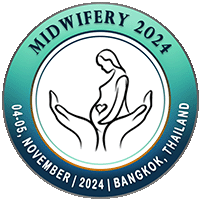
Svetlana Dubrovina
Rostov State Medical University, Russian FederationTitle: Experience With the Use of Bovhyaluronidase Azoximer and Progestogen Combination in the Complex Treatment of Endometriosis, Results of the Island Intra Study
Abstract
Context. Endometriosis is a disease that affects about 10% of women of reproductive age, leading to the development of pain and infertility. The complexity and ambiguity of the endometriosis pathogenesis is the reason why the treatment of this disease is effective only during the application period. Therefore, questions regarding the effectiveness of various forms endometriosis treatment are of absolute importance for practice and are subject to further study.
Objective: to compare the effectiveness of complex therapy by combination of progestogens and longidase and progestogens monotherapy for the treatment of patients with endometriosis with pain syndrome.
Methods. Non-interventional two-center comparative cohort study.
Patient(s). 72 patients aged 35 to 50 years with diagnosed endometriosis: 33 women in the control group (treated by progestogens), thirty-nine women of the main group (treated by progestogen and longidase combination).
Intervention(s). Bovhyaluronidase azoximer (longidase, lyophilisate 3000 IU) intramuscularly once every 3 days for 10 injections (30 days), then suppositories - 3000 IU rectally once every 5 days No 20.
Main Outcome Measure(s). The effectiveness was assessed by analyzing the dynamics of the severity of pelvic pain according to VAS and ultrasound data.
Result(s). The dynamics of pain indicators on the VAS scale revealed a statistically significant maximum decrease in pain intensity from 7.0 points to 4 .0 (p<0.001) both in the main (combination therapy) and control (progestogens monotherapy) groups, the intergroup difference wasn’t significant, p = 0.19. Ultrasound has shown a decrease in the frequency of the indicator “fan-shaped shadow from small focal formations” from 38.9% to 19.4% (p = 0.016) and statistically significant decrease in uterine volume from 69.9 to 61.5 (p<0.001) in the main group. In the control group, there was only statistically significant decrease in uterine volume from 72.3 to 59.9 (p=0.023). The frequency of detection of such an ultrasound criterion as “fuzzy, uneven and discontinuous endometrial membrane” in the main group was 22.2% (n=8), in the control group 46.7% (n=14), the intergroup difference was significant, p=0.036 (OR: 3.06, 95% CI: 1.06-8.87).
Conclusion. The results obtained clearly demonstrate the advantages of using combination therapy for endometriosis (progestogens in combination with longidase).
Biography
Dr. Svetlana O Dubrovina, Department of Obstetrics and Gynecology, Federal State Budgetary Educational Institution of Higher Education, Rostov State Medical University, Ministry of Healthcare of the Russian Federation, Rostov-on-Don, Russian Federation

